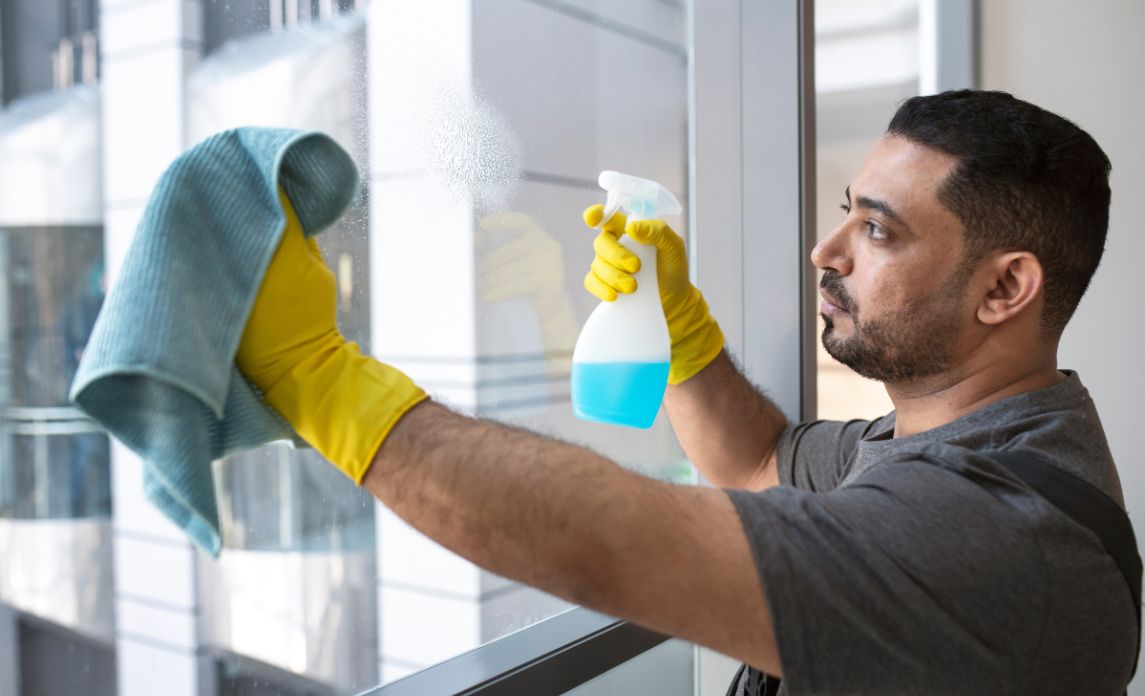Is your home or office looking a little dark and gloomy? It might not be the lights, but rather your glass windows. While they aren’t always the priority when it comes to cleaning, windows can affect how a space looks and feels. If you don’t clean them regularly, they can get caked up with dust, dried rainwater, bird excrement, and many other kinds of debris.
Fortunately, it’s easy to keep your windows clean. You won’t do it every single day, anyway, so the upkeep isn’t that demanding on your time and wallet. To help you keep your windows sparkling clean and clear, here are some tips from professional commercial cleaners:
Overcast Weather Is Best
Most people assume that the best weather to clean windows is when the sun is out and shining bright. However, this is actually a bad idea because the heat can dry out the window cleaner and water before you can wash them off. These can cause sticky streaks to form, which can be a big hassle to clean.
Thus, it’s much better to wait for an overcast or at least mostly cloudy weather to clean glass windows. This way, you have enough time to soap up and rinse the panes without worrying whether or not the liquids will dry up.
As a bonus, washing your windows during cloudy days minimises glare. This makes it easier to find any stray streaks and dirt.
Prepare Two Sets of Scrubbers
To achieve the best results in window washing, you’re going to need two sets of scrubbers. At the very least, get something with a replaceable head.
Keep in mind that the external side of window panes are exposed to more kinds of dirt and pollutants. If you use the same scrubber for the internal side, you’re essentially bringing all of these substances indoors. By having a dedicated tool for each side of the window, you can prevent such instances of contamination.
You may also want to consider getting a long-handled scrubber, especially if you have tall and/or wide windows.
Dust Before Scrubbing
Much like wet mopping, window washing is best done after removing as much dust as you possibly can from the surface. Doing this makes the job so much easier and faster, because there’s less dirt you’ll be spreading around. What’s more, dusting your windows before washing them can prevent larger bits of debris from potentially scratching the glass.
Use White Vinegar for Hard Water Spots
In case there are spots on your windows caused by hard water, you can get rid of them first using a 1:1 solution of water and white vinegar. This mixture can also dissolve oily residues left behind by less-than-stellar cleaning efforts in the past.
Gravity Is Your Friend
Another principle of home cleaning that you can apply to window washing is to go from top to bottom. This can be more economical because the cleaning product can flow down to areas that you’re going to scrub later. Starting at the top and working your way down to the bottom also prevents drips from getting onto the parts you’ve already cleaned.
Squeegee It Right
For a thorough, streak-free clean, you should finish your window-washing session with a squeegee. Like window scrubbers, it’s best if you can get long-handled squeegees so you can easily clean larger windows. You should also ensure that the rubber blade is in good shape, or else you risk scratching the glass.
Do note that it takes a little practice to get squeegee-ing just right. Here are some things to remember:
- Align the squeegee so that the blade is flat against the window pane.
- For beginners: start at the top corners of the window and go directly down. Then, move the squeegee horizontally, making sure to overlap slightly with the previous path.
- A more advanced method is called fanning. This involves moving the squeegee using short strokes in different directions, so that the soapy water doesn’t get under the blade and get splattered across the glass.
- Have a piece of cloth or sponge ready, so you can wipe your squeegee on it after every stroke.
- Repeat the process until the entire pane is clean.
- Use a microfibre cloth to remove suds from the edges and corners of the window panes.
Last but not least, give the window a final wipe-down with a fresh microfibre cloth to catch any streaks.
Do note that if you have smaller windows, such as Clerestory windows (those small, narrow windows installed along the upper part of a wall), a squeegee won’t be any good. It’s better to just use a microfibre cloth straight away.
Finally, make sure you have the proper safety equipment, particularly if you’re cleaning windows that are about 1.8 to 2 metres above the ground to prevent injuries. Aside from safety glasses to shield your eyes from stray flecks of cleaning fluid, it’s also a good idea to wear hard hats and protective jackets. For windows that are higher than 2 metres, it may be a better idea to call the professionals.


